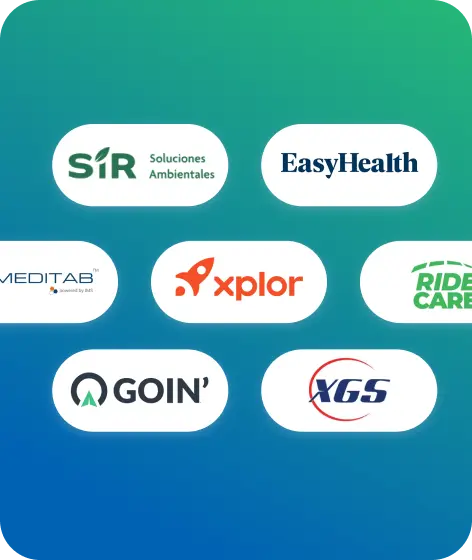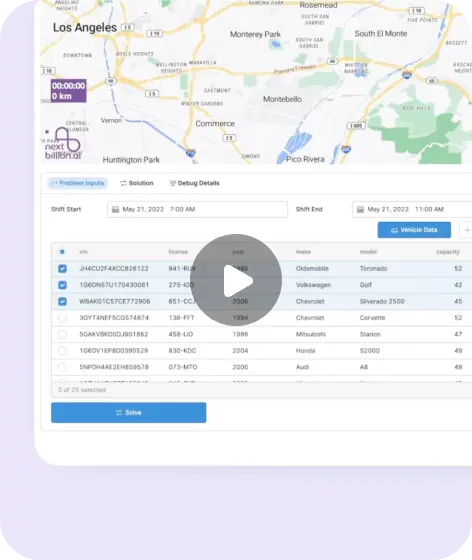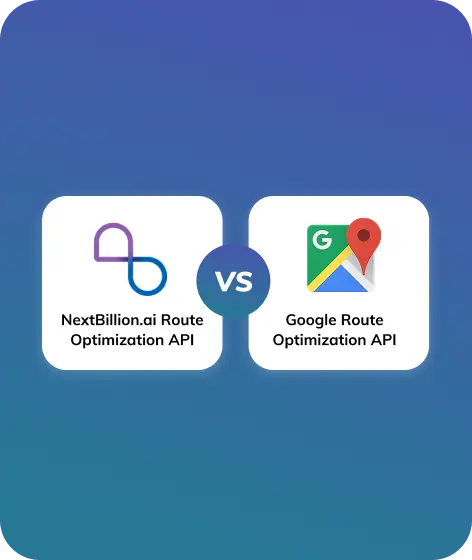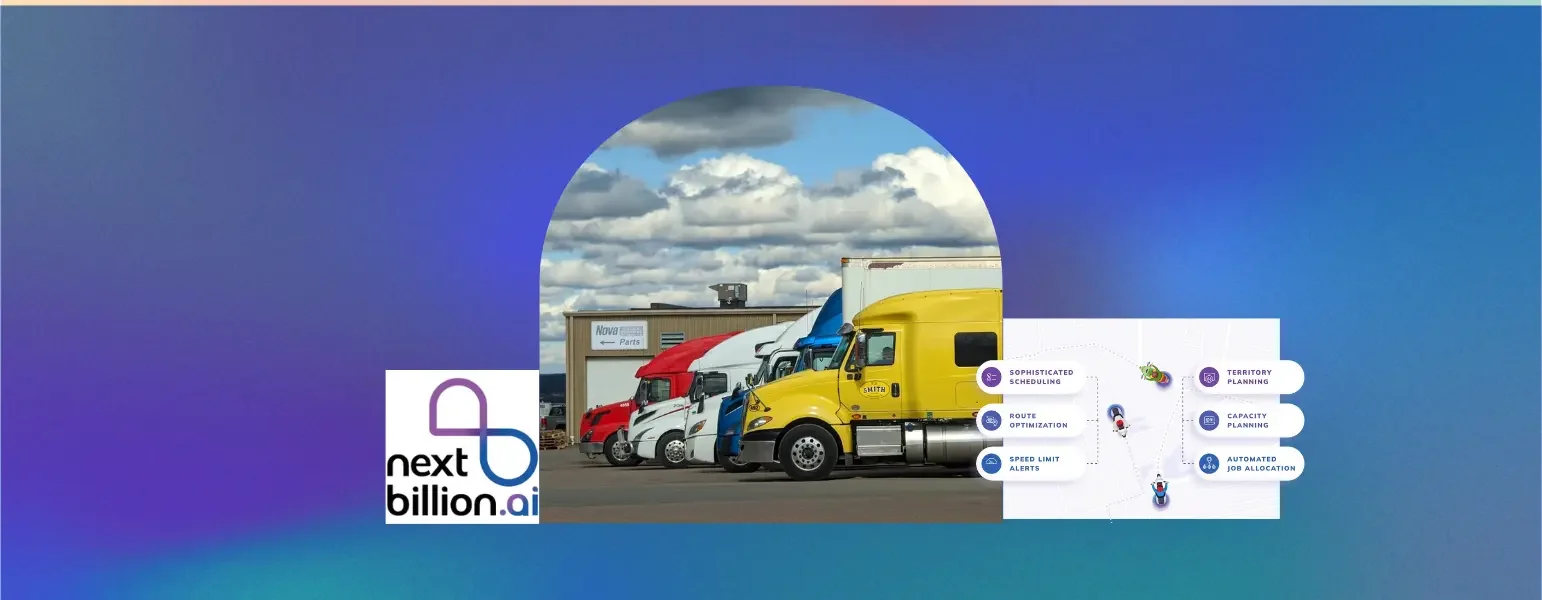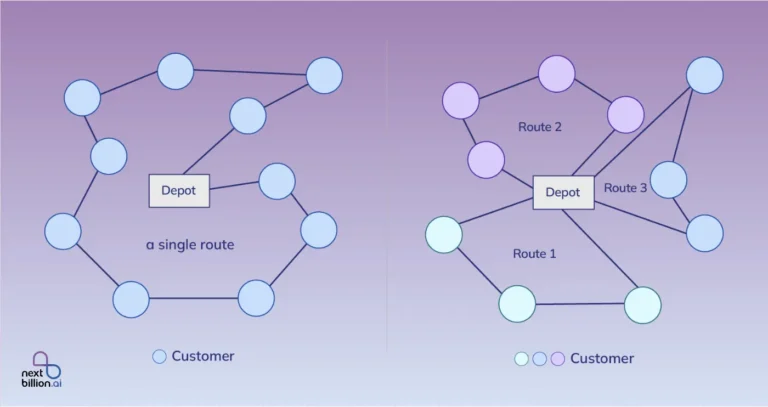
Table of Contents
The trucking and logistics industry requires several tools and resources to operate efficiently throughout the year. The authorities working in this sector must also ensure that their operators, drivers, and other workers perform their activities in a safe and secure environment. This involves checking whether the goods are transported efficiently and on time.
While most of these tasks can be done manually, technology-driven solutions like AI-based vehicle fleet management systems, telematics platforms, and IoT-enabled tracking devices can enormously enhance efficiency. That is why several companies across the trucking and logistics industry prefer vehicle fleet management.
This becomes possible by using comprehensive fleet management software that integrates real-time GPS tracking, automated dispatch systems, predictive maintenance analytics, and route optimization algorithms. These platforms can take care of multiple activities, including:
- Monitoring vehicle locations through cloud-connected GPS systems to ensure timely deliveries.
- Analyzing driver behavior with telematics sensors to detect speeding, harsh braking, or idling, improving safety standards.
- Automating maintenance schedules using IoT-based diagnostics to prevent unexpected breakdowns.
- Enhancing cargo security through RFID (Radio-Frequency Identification) and geofencing technology to prevent theft or unauthorized detours.
These advanced tools ensure safe driving practices, optimized fuel consumption, and efficient logistics deliveries, allowing trucking and logistics companies to maintain higher operational standards and reduce costs.
Ready to learn more about the latest fleet management solutions? Explore our blog for in-depth insights and stay ahead of the trends in 2025 and beyond!
Enhancing Efficiency with Fleet Management Platforms in Trucking and Logistics
Fleet management platforms have become indispensable in modern trucking and logistics. These platforms offer a suite of solutions to manage all vehicle fleets effectively. A recent report suggests that the fleet management market is expected to reach the worth of $55.6 billion by 2028 with a CAGR of 14.2% during the forecast period. This implies that the industry has evolved with time and requires effective fleet management for logistics.
That is why businesses are relying on advanced fleet management software to streamline their operations and increase productivity without much expenses. Their primary motto is to ensure that all goods reach their destinations in optimal condition within the stipulated delivery timelines. This requires meticulous planning and management which is fulfilled by leveraging a fleet management platform.
Understanding Fleet Management Platforms
It would be best if emerging businesses or those already working in the trucking and logistics industry understand what fleet management platforms are before leveraging them. This involves knowing the latest fleet management trends and understanding the functionalities of the software.
What is a Fleet Management Platform?
A fleet management platform allows fleet managers to monitor their vehicles, equipment, and drivers through a single application. The software’s capabilities typically include:
- Locating specific vehicles using GPS with real-time tracking and geofencing alerts.
- Monitoring driver behavior through telematics sensors, including speed, braking intensity, acceleration patterns, and idle time to measure performance.
- Managing and reducing fuel costs with AI-driven fuel consumption analytics, idle-time monitoring, and route optimization tools.
- Scheduling vehicle/equipment maintenance with predictive maintenance algorithms that analyze sensor data to forecast potential failures.
- Managing jobs from assignment to completion using automated dispatch systems and real-time status updates.
- Simplifying compliance through automated Electronic Logging Devices (ELDs), Hours of Service (HOS) tracking, and digital inspection reports.
The software often uses AI in fleet management and other telematic tools to capture information about specific vehicle movements, driver behavior, and other operational activities. These AI-powered tools help transmit data from a particular vehicle to the cloud through cellular or satellite communication networks. Later, the fleet management platform interprets and visualizes the same data to give accurate results.
The software provides instant access to the vehicle location, utilization, compliance, maintenance and other relevant information on an easy-to-understand dashboard. A few of these systems also provide advanced fleet data analytics for more insights into driver behavior and route optimization. These actionable insights also help businesses identify opportunities for improvement and take action.
Key Features of Fleet Management Software
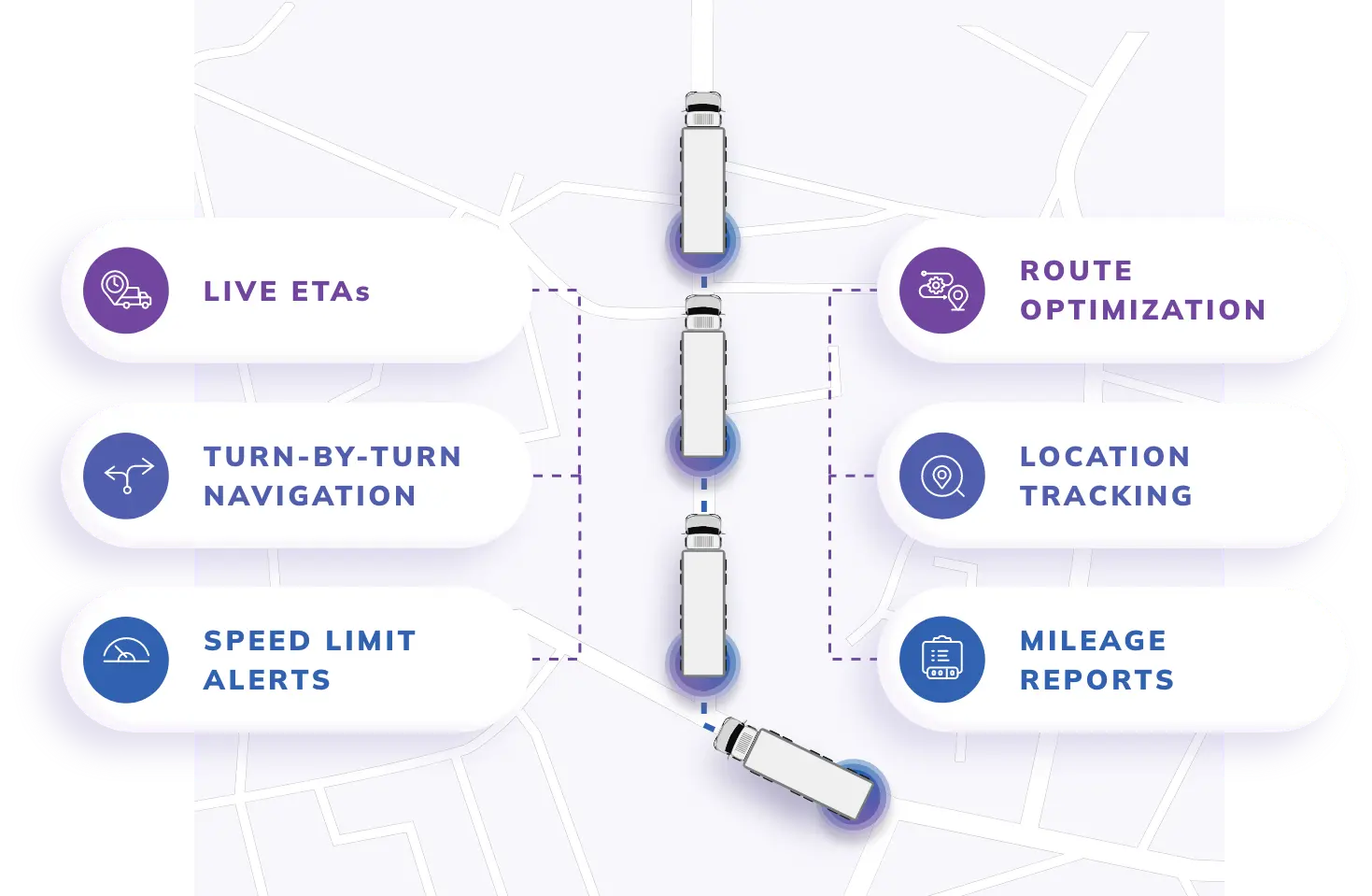
Fleet management software is designed to enhance business operations across the trucking and logistics industry. It also helps improve driver safety and supports businesses in the challenging domain of last-minute deliveries.
Here are the essential features of the software that every business can explore for better growth and operations:
Enhanced GPS Tracking
GPS tracking is currently the backbone of all autonomous fleet vehicles and their effective management. It offers a multifaceted approach for businesses to oversee their fleet operations.
Fleet managers can use multi-constellation GNSS (Global Navigation Satellite System) technology, including GPS, GLONASS, Galileo, and BeiDou, along with cellular networks (4G LTE, 5G) through fleet management software to gain more visibility into vehicle activities, equipment, and inventories.
These advanced tracking systems offer:
- Real-time location updates with accuracy down to 1-2 meters.
- Geofencing capabilities with instant alerts when vehicles enter or leave predefined zones.
- Route history playback and trip data analysis for auditing and performance review.
- Integration with telematics data for comprehensive fleet analytics.
Strategic Fuel Management
Fuel management is integral for cost-efficient last-mile delivery, where fuel expenses enormously impact operational costs. Fleet management software includes automated fuel management systems equipped with IoT-based fuel sensors and AI-driven analytics to provide real-time monitoring and actionable insights.
Key features are:
- Real-time fuel level monitoring through ultrasonic fuel sensors.
- Consumption pattern analysis using AI algorithms to detect inefficiencies.
- Alerts for fuel theft or unauthorized usage based on location and time-stamped data.
- Integration with route optimization to minimize fuel wastage and idle time.
Proactive Alerts and Notifications
Fleet management software ensures that authorities stay updated about potential issues in logistics operations and can find relevant solutions on time. The software provides several customizable, rule-based alerts and real-time notifications acting as an early warning system. This enables fleet managers to address situations proactively before they escalate further.
Key alert types include:
- Engine diagnostics alerts for issues like overheating, low oil pressure, or brake wear.
- Driver behavior alerts for speeding, harsh braking, and excessive idling.
- Maintenance reminders based on predictive analytics and sensor data.
- Geofence breach alerts to detect unauthorized route deviations.
Optimized Driver Performance, Behavior, and Retention
Drivers are the key to operational success in fleet management. Fleet management software assists in monitoring and enhancing driver performance, behavior, and retention by using
AI-driven telematics, driver scorecards, and wearable technology. This helps maintain high safety standards and promises the longevity of the trucking fleet.
Key tools and features include:
- Driver behavior monitoring through accelerometer-based sensors for detecting harsh driving habits.
- AI-powered dash cams that provide real-time feedback and video-based evidence of driving incidents.
- Driver scorecards and performance analytics dashboards to assess safety and efficiency metrics.
- In-app coaching modules and gamified incentives to promote safe driving practices.
- Wearable health technology for fatigue detection using heart rate and eye-tracking sensors.
Benefits of Using Fleet Management Platforms
Autonomous fleet vehicles require the assistance of efficient software to run effectively. The software also helps companies across the trucking and logistics industry manage their additional operations without any hassle. Their primary benefits include:
Real-time Tracking and Monitoring

Fleet management platforms provide real-time tracking and monitoring using GPS, GLONASS, and cellular networks (4G/5G). This allows managers to know the exact location of each vehicle at any given time. These systems use telematics sensors and geofencing capabilities to enhance security, improve efficiency in dispatching and routing, and enable rapid response during emergencies.
Additionally, real-time tracking helps ensure sustainability in fleet management by:
- Reducing fuel consumption through AI-driven route optimization.
- Minimizing idle time with automated idle alerts.
- Optimizing routes using real-time traffic data and predictive analytics to lower emissions and operational costs.
Improved Route Optimization

Regular vehicle maintenance helps prolong the lifespan of fleet assets and prevents breakdowns. Fleet management software automates maintenance scheduling and optimizes routes through machine learning-based route algorithms and dynamic routing engines. These tools consider factors like traffic conditions, weather patterns, load weight, and delivery windows to optimize delivery routes.
This proactive approach minimizes:
- Vehicle downtime through predictive maintenance alerts.
- Repair costs by identifying maintenance needs early via IoT-enabled diagnostic sensors.
- Driver fatigue by balancing workload and avoiding congested routes.
- Carbon emissions by optimizing delivery sequences and avoiding unnecessary detours.
Enhanced Fleet Safety and Compliance
Operating a fleet in trucking and logistics comes with various regulatory requirements. Fleet management systems can easily automate Hours of Service (HOS) recording through Electronic Logging Devices (ELDs) and track compliance data in real time.
Key safety and compliance features include:
- Automated vehicle inspection reminders based on DVIR (Driver Vehicle Inspection Reports).
- Telematics-driven driver behavior monitoring to enforce safety policies.
- Compliance dashboards for real-time visibility into adherence to DOT, FMCSA, and regional regulations.
- Instant alerts for HOS violations and automated reporting to avoid penalties.
This helps reduce the risk of fines, legal issues, and potential accidents while ensuring fleet safety.
Cost Management and Fuel Efficiency
Fuel costs are a significant expense for all fleet-based businesses. Fleet management platforms offer features like AI-driven GPS route optimization, real-time fuel consumption monitoring, and driver behavior analytics for efficient cost management.
Key features for fuel efficiency include:
- AI-powered route optimization to identify the shortest, most fuel-efficient routes.
- Driver scorecards highlighting fuel-wasting behaviors like rapid acceleration, harsh braking, and idling.
- Fuel theft detection with IoT-enabled fuel level sensors.
- Integration with fuel card data for detailed fuel expenditure reports.
This helps businesses achieve substantial fuel savings by promoting eco-friendly driving practices and reducing operational inefficiencies.
Integration with Logistics Operations
Fleet operations and logistics management affect the delivery of goods and services collaboratively. Businesses can integrate these functions to:
- Optimize resource allocation using AI-driven dispatch systems.
- Reduce costs with real-time supply chain visibility tools.
- Enhance efficiency by automating delivery schedules and inventory updates.
- Improve customer satisfaction with automated delivery notifications and accurate ETAs.
Seamless Integration with Supply Chain Systems
Efficient fleet management for logistics involves integrating with ERP systems, warehouse management systems (WMS), and transportation management systems (TMS). These integrations ensure that:
- Transportation costs, fleet utilization, and compliance data are tracked centrally.
- Real-time inventory updates sync with fleet availability.
- Cloud-based platforms provide a unified view of logistics operations.
Enabling end-to-end supply chain visibility ensures all stakeholders know shipment statuses in real-time. Advanced systems use blockchain technology for immutable shipment records and AI for predictive delivery times. This approach enhances revenue, customer satisfaction, and fleet agility.
Data Sharing Across Teams and Departments
Effective data sharing in fleet management involves cloud-based data warehouses and APIs for seamless integration across teams and departments. This allows for:
- Real-time data synchronization between fleet, logistics, and customer service teams.
- Developing unified data control towers for holistic fleet insights.
- Automated reporting and dashboard updates using BI (Business Intelligence) tools like Power BI or Tableau.
Key benefits include:
- Identifying inefficiencies through AI-powered fleet data analytics.
- Breaking down data silos to improve collaboration and decision-making.
- Enabling quick adaptation to market changes with real-time data-driven insights.
Top Fleet Management Platforms in Trucking
Trucking and logistics businesses may find several fleet management platforms online. However, they must choose only a specific software that matches well with their requirements and guidelines. Below is a list of the top fleet management software providers.
NextBillion.Ai
NextBillion.AI is an efficient platform that uses AI in fleet management to ensure all trucking and logistics operations are completed smoothly. The platform helps solve fleet routing, navigation, and tracking challenges.
Its key features include:
- Advanced route optimization with maximized fleet utilization to meet the unique needs of trucking and logistics businesses.
- Regulation-compliant trucking routes for various vehicles based on factors like truck type, weight, and dimensions.
- Turn-by-turn navigation to provide clear directions to drivers for a safe, efficient, and punctual logistics journey.
- Telematics, ERP, and CRM integrations for efficient and autonomous fleet management.
- Live tracking and ETAs to ensure all trucking and logistics operations are completed on time.
TrackoBit
This white-label fleet management software provides route planning, fuel monitoring, driver behavior monitoring, and other relevant solutions. TrackoBit ensures an equipment uptime of 99.9% and helps automate the fleet accordingly.
Its key features include:
- The smart route planning feature uses dynamic routing to provide the most cost-efficient route for the drivers.
- Video telematics enables companies to keep a close eye on their drivers, and get alerts and notifications for events that are not safe for their operations.
- Helps manage drivers, their documentation, and other operations efficiently with its driver monitoring solutions.
- Offers parking mode alerts, battery alerts for EVs, and ensures compliance for the fleet.
Samsara
It is an all-in-one fleet management software that provides various features like route optimization, electrification planning, and driver efficiency scores. Samsara usually collects live data from various mobile devices and sends it to a unified analytics dashboard.
Its key features include:
- Helps companies gain better visibility by connecting their fleets, equipment, sites, and people.
- Provides real-time visibility for actionable insights across the workforce, vehicles, assets, and facilities.
- Streamlines workflows and makes data-driven decisions by allowing users to leverage a best in class UX.
- Offers the largest partner ecosystem for companies, drivers, and other fleet managers to stay connected.
Comparing Software Solutions for Trucking Fleets
The following table draws a comparison between all the top fleet management software so that businesses can choose either of them to meet their needs.
Feature | NextBillion.AI | TrackoBit | Samsara |
Focus | AI-driven fleet management for routing, navigation, and tracking. | White-label fleet management with a focus on route planning, fuel monitoring, and driver behaviour. | All-in-one platform for fleet optimization, electrification planning, and driver efficiency. |
Route Optimization | Advanced, regulation-compliant routing for specific truck types, weight, and dimensions. | Dynamic routing for cost-efficient route planning. | Optimized routes for electrification and improved fleet efficiency. |
Navigation | Turn-by-turn navigation for safe and punctual deliveries. | Video telematics for event-based monitoring during journeys. | Real-time visibility of workforce and assets. |
Telematics Integration | Telematics, ERP, and CRM integrations for autonomous management. | Offers battery alerts for EVs and compliance alerts for fleets. | Unified dashboard for live data collection from multiple sources. |
Tracking and Visibility | Live tracking and ETAs to ensure timely logistics operations. | Parking mode and real-time fleet management alerts. | Real-time visibility and actionable insights across vehicles, assets, and facilities. |
Scalability and Ecosystem | Customizable to the unique needs of trucking and logistics. | Focused on compliance and efficiency for smaller or mid-sized fleets. | Largest partner ecosystem for connectivity across fleets and teams. |
How Fleet Management Platforms Improve Decision Making
Fleet managers can gather crucial data that enhances decision-making and improves efficiency by integrating different fleet management tools. These solutions across platforms include telematics, fuel management systems, route optimization software, and driver safety monitoring. Emerging businesses must know how fleet management platforms improves decision-making by ensuring the following:
Data-Driven Insights for Fleet Managers
Data-driven decision-making involves taking strategic actions based on insights from fleet data analytics. This approach relies on gathering information from vehicles, drivers, and logistics operations to identify patterns, forecast outcomes, and optimize performance.
The process begins with advanced data collection strategies using telematics devices, high-precision GPS trackers, IoT-enabled sensors, and onboard diagnostic (OBD-II) systems. These tools record vital data, such as:
- Vehicle location with multi-constellation GNSS (GPS, GLONASS, Galileo, BeiDou).
- Fuel consumption tracked through ultrasonic or flow meter sensors.
- Tire pressure monitoring systems (TPMS) providing real-time PSI levels.
- Engine health is monitored via CAN (Controller Area Network) bus diagnostics.
- Driver behavior captured using accelerometer-based telematics for harsh braking, speeding, and idling.
This vast volume of raw data is processed and transformed into actionable insights using AI-powered fleet management platforms equipped with machine learning algorithms, predictive analytics models, and cloud-based data processing capabilities.
Real-Time Operational Visibility
Data-driven approaches enable fleet managers to gain a real-time, 360-degree view of fleet operations through interactive dashboards, automated alerts, and geospatial analytics. This empowers them to make proactive decisions, leading to improvements in:
- Fuel efficiency by analyzing consumption trends and route optimization.
- Maintenance schedules by predicting component failures before breakdowns.
- Driver safety by identifying risky driving patterns and enforcing corrective measures.
- Cost savings by reducing idle time, optimizing routes, and minimizing repairs.
Predictive Analytics for Maintenance and Performance
Fleet management platforms handle the complexities of modern operations across four key stages: data collection, integration, analysis, and action.
Key Predictive Analytics Capabilities:
- Engine Performance Analysis:
Predictive maintenance algorithms analyze real-time engine diagnostics, historical repair data, and sensor outputs to forecast component failures. This allows for preemptive repairs based on degradation patterns detected through AI models. - Route Optimization Tools:
These tools use real-time traffic data, historical congestion patterns, weather forecasts, and delivery schedules to recommend the most efficient paths. This reduces:- Fuel consumption through AI-driven path selection.
- Delivery times by avoiding bottlenecks and road closures.
- Wear and tear on vehicles through smoother route planning.
- Fuel consumption through AI-driven path selection.
- Driver Behavior Monitoring:
Fleet management systems use AI-powered telematics, accelerometers, and in-cab cameras to identify risky behaviors such as:- Harsh braking, rapid acceleration, and excessive idling.
- Distracted driving detected via facial recognition and eye-tracking technology.
- Harsh braking, rapid acceleration, and excessive idling.
- Engine Performance Analysis:
- Managers can then implement corrective measures, such as:
- Personalized coaching programs.
- Automated alerts and feedback systems.
- Gamified incentives for safe driving.
- Personalized coaching programs.
The Future of Fleet Management in Trucking
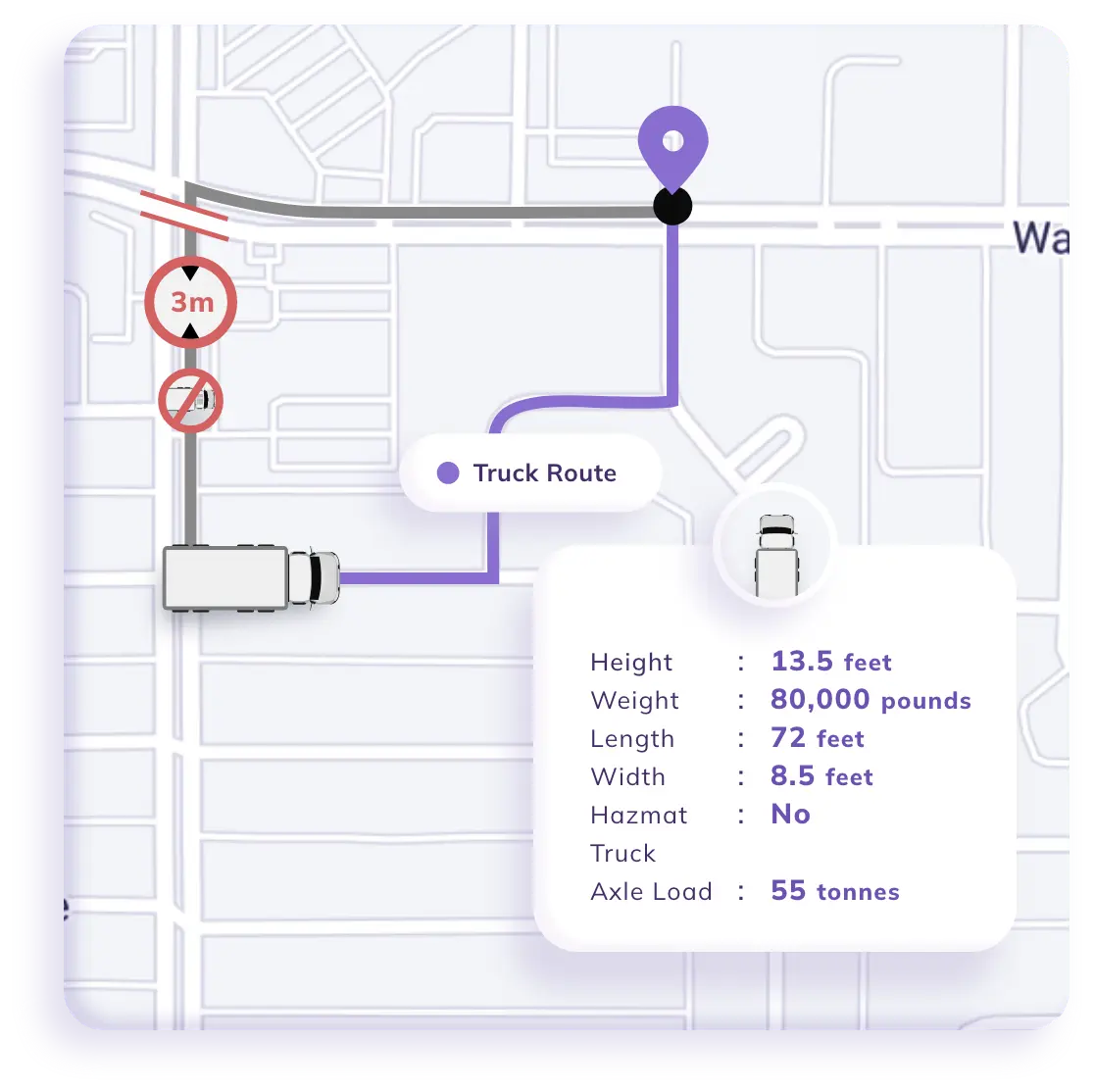
As technology continues to advance rapidly, the future of fleet maintenance looks to be driven by innovation and automation. Some of the key trends that are likely to shape fleet technology 2025 are:
Expansion of Robotics and Automation
Robotics and automation are revolutionizing fleet management and logistics operations by enhancing efficiency, reducing labor costs, and improving accuracy. The integration of AI-driven robotics, automated guided vehicles (AGVs), and autonomous mobile robots (AMRs) is becoming more prevalent in warehouses, distribution centers, and logistics hubs.
Key Applications:
- Warehouse Automation:
Utilize robotic pick-and-place systems with computer vision and machine learning algorithms for accurate inventory handling. This improves order fulfillment rates and reduces human error. - Autonomous Loading and Unloading:
Automated loading systems powered by robotics and conveyor belt technology can streamline loading and unloading processes, reducing turnaround times and labor costs. - Automated Delivery Vehicles:
Last-mile delivery robots and self-driving delivery vans equipped with LIDAR, radar, and 360-degree cameras enable efficient, contactless deliveries in urban environments. - Fleet Maintenance Automation:
Robotic arms and AI-driven diagnostics tools perform routine maintenance checks and minor repairs. They enhance efficiency and reduce vehicle downtime.
Growing Focus on Sustainability
Sustainability is becoming a core focus in fleet management as businesses strive to meet environmental regulations and reduce their carbon footprint. The integration of eco-friendly technologies, renewable energy sources, and data-driven sustainability practices is reshaping the industry.
Key Initiatives:
- Fleet Electrification:
Transitioning to electric vehicles (EVs) and hybrid-electric fleets helps reduce greenhouse gas emissions. Advances in battery technology, such as solid-state batteries and fast-charging infrastructure, support this shift. - Alternative Fuels:
Adoption of biofuels, hydrogen fuel cells, and compressed natural gas (CNG) provides cleaner alternatives to diesel and gasoline, significantly lowering emissions. - Route Optimization for Fuel Efficiency:
AI-driven route optimization tools use real-time traffic data, weather conditions, and machine learning algorithms to reduce fuel consumption and emissions by selecting the most efficient routes. - Sustainability Analytics:
Fleet management platforms offer carbon footprint tracking, emissions reporting, and sustainability dashboards to help businesses monitor and reduce environmental impact. - Green Logistics Practices:
Companies are adopting eco-friendly logistics strategies like load consolidation, reverse logistics, and packaging optimization to minimize waste and emissions. - Renewable Energy-Powered Operations:
Implementing solar-powered charging stations and renewable energy sources in logistics hubs reduces reliance on non-renewable energy.
Conclusion
Technology has transformed things to a great extent in the trucking and logistics industry. Fleet management platforms play a crucial role here by helping companies run operations smoothly. This involves overseeing a company’s vehicles, like trucks, vans, and other important assets used for transportation. Time-sensitive deliveries are the norm in the logistics industry and effective fleet management ensures the same by following several AI-powered functionalities to run tasks. So, trucking and logistics companies can streamline their operations, reduce costs, enhance punctuality, and gain a competitive edge in the market by investing in advanced fleet management platforms.
FAQs
A fleet management platform for trucking integrates real-time GPS tracking, vehicle diagnostics, fuel management, driver behavior monitoring, and maintenance scheduling capabilities. These features are enhanced by route optimization algorithms, electronic logging devices (ELDs) for hours-of-service compliance, and documentation management systems.
Fleet management platforms improve logistics operations by providing end-to-end visibility of assets and streamlining communication between drivers, dispatchers, and customers. These systems enable better decision-making through data-driven insights. This helps companies optimize routes, reduce fuel consumption, minimize vehicle downtime, and improve driver safety.
Fleet management platforms are evolving to incorporate artificial intelligence and machine learning capabilities for predictive analytics and autonomous decision-making. Key trends include the integration of alternative fuel vehicle management, advanced driver assistance systems (ADAS), and blockchain technology for enhanced security and transparency.
About Author
Bhavisha Bhatia
Bhavisha Bhatia is a Computer Science graduate with a passion for writing technical blogs that make complex technical concepts engaging and easy to understand. She is intrigued by the technological developments shaping the course of the world and the beautiful nature around us.

